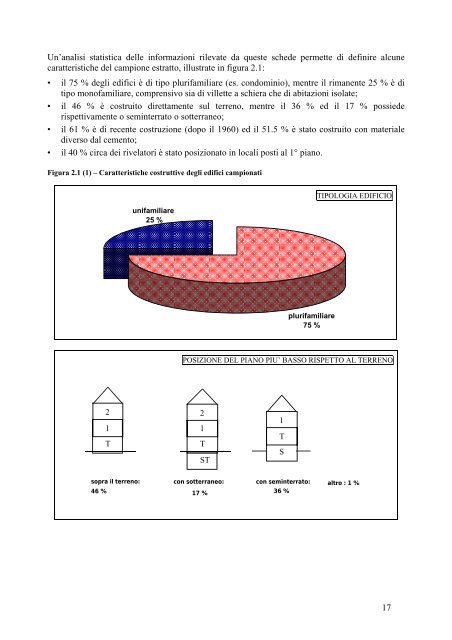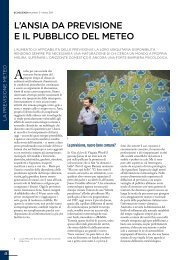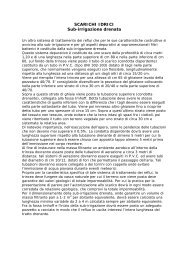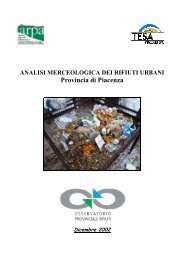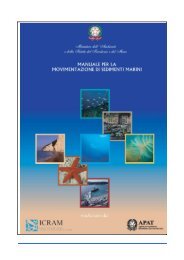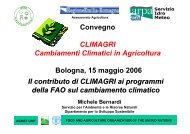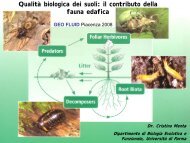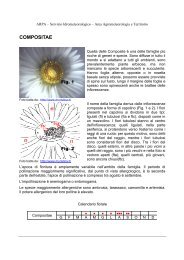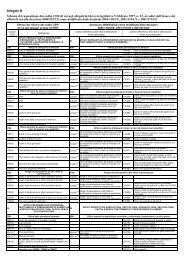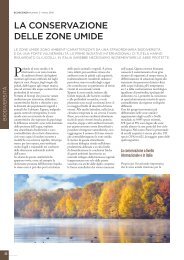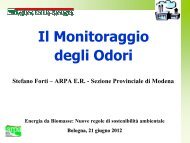Il Radon ambientale in Emilia-Romagna - Arpa
Il Radon ambientale in Emilia-Romagna - Arpa
Il Radon ambientale in Emilia-Romagna - Arpa
Create successful ePaper yourself
Turn your PDF publications into a flip-book with our unique Google optimized e-Paper software.
Un’analisi statistica delle <strong>in</strong>formazioni rilevate da queste schede permette di def<strong>in</strong>ire alcune<br />
caratteristiche del campione estratto, illustrate <strong>in</strong> figura 2.1:<br />
• il 75 % degli edifici è di tipo plurifamiliare (es. condom<strong>in</strong>io), mentre il rimanente 25 % è di<br />
tipo monofamiliare, comprensivo sia di villette a schiera che di abitazioni isolate;<br />
• il 46 % è costruito direttamente sul terreno, mentre il 36 % ed il 17 % possiede<br />
rispettivamente o sem<strong>in</strong>terrato o sotterraneo;<br />
• il 61 % è di recente costruzione (dopo il 1960) ed il 51.5 % è stato costruito con materiale<br />
diverso dal cemento;<br />
• il 40 % circa dei rivelatori è stato posizionato <strong>in</strong> locali posti al 1° piano.<br />
Figura 2.1 (1) – Caratteristiche costruttive degli edifici campionati<br />
2<br />
1<br />
T<br />
sopra il terreno:<br />
46 %<br />
unifamiliare<br />
25 %<br />
plurifamiliare<br />
75 %<br />
TIPOLOGIA EDIFICIO<br />
POSIZIONE DEL PIANO PIU’ BASSO RISPETTO AL TERRENO<br />
2<br />
1<br />
T<br />
ST<br />
con sotterraneo:<br />
17 %<br />
1<br />
T<br />
S<br />
con sem<strong>in</strong>terrato:<br />
36 %<br />
altro : 1 %<br />
17


